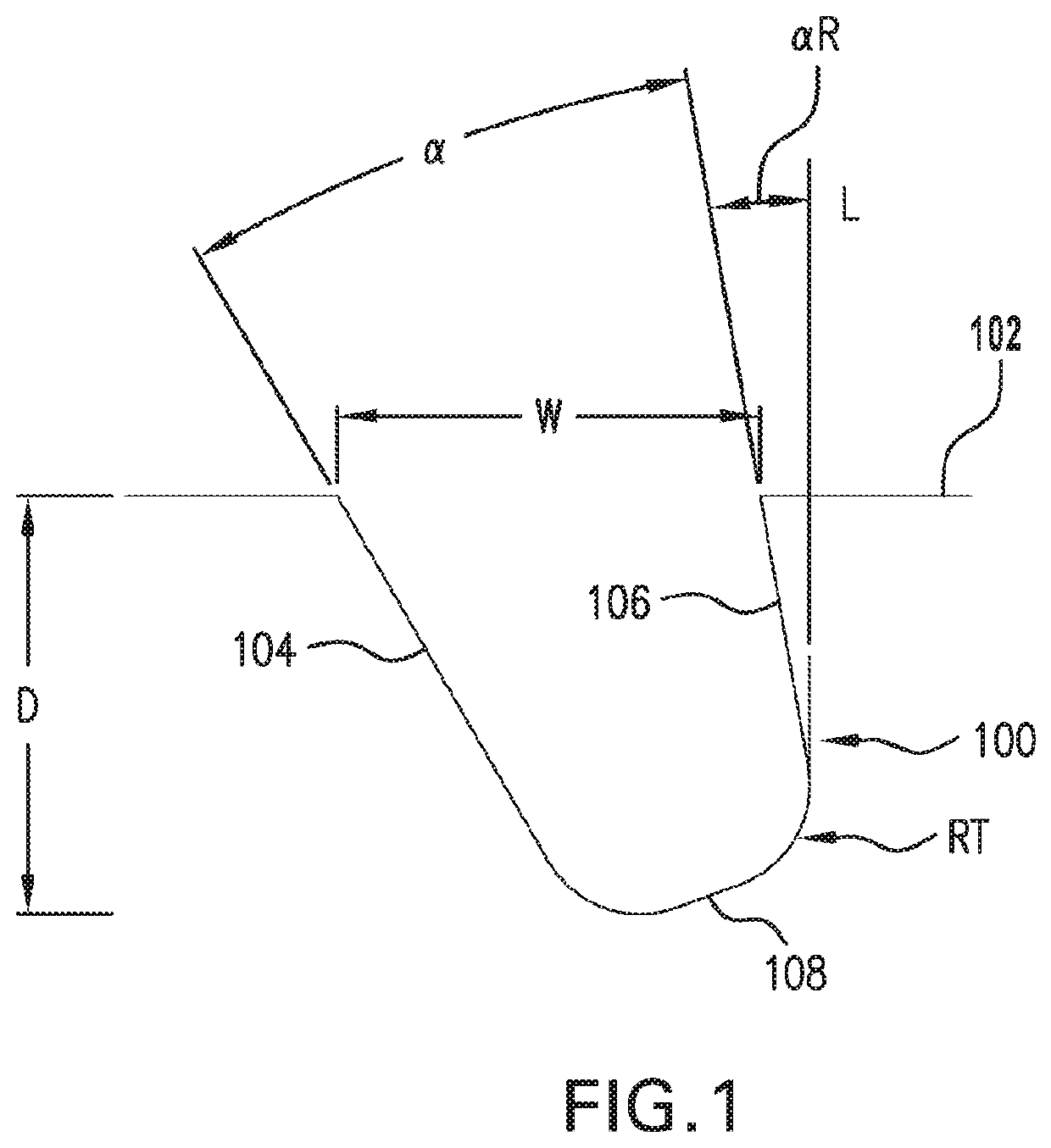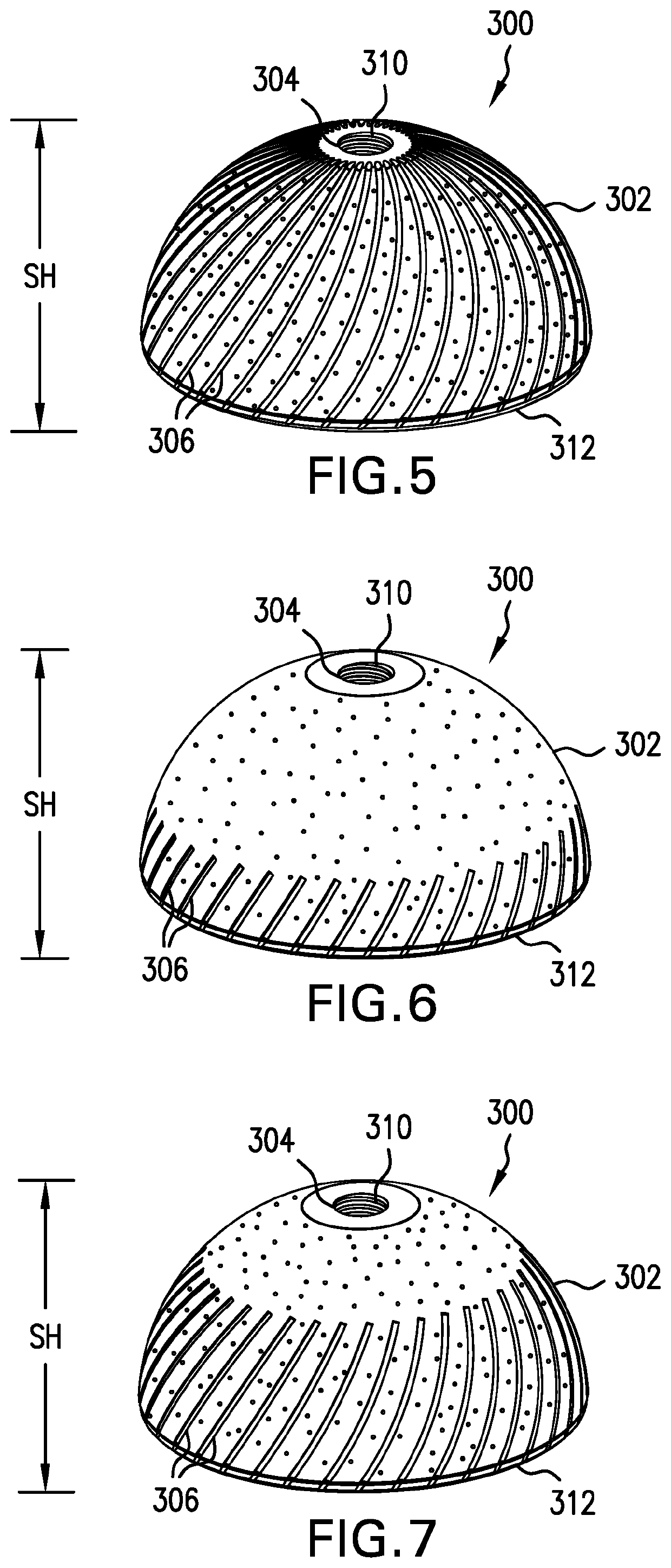Implants with groove patterns and soft tissue attachment features
a technology of soft tissue and grooves, applied in the field of orthopaedic implants, can solve the problems of difficult removal of cement substances during surgery, failure of implants, and potential damage to the surrounding anatomy of patients, and achieve the effect of easy installation and removal
- Summary
- Abstract
- Description
- Claims
- Application Information
AI Technical Summary
Benefits of technology
Problems solved by technology
Method used
Image
Examples
Embodiment Construction
[0066]The present invention provides implants with grooved features that prevent implant movement, aid tissue attachment, make the implant easier to insert but more difficult to remove, or some combination of the aforementioned features. The present invention also relates to manufacturing methods for such implants.
[0067]Referring now to FIG. 1, an example groove 100 is shown that may be included on one or more surfaces 102 of an orthopedic implant. The groove 100 can be one of many grooves located on a porous section of the implant, a solid implant substrate, or a combination of the two. The grooves can have one or more of the following purposes: preventing motion, migration, back-out, tilting, translation, and rotation of the implant; aiding tissue attachment to the implant; and easing implant insertion at an implantation site while increasing the difficulty of implant removal. It should be appreciated that the previously described purposes are exemplary only and grooves can be add...
PUM
 Login to view more
Login to view more Abstract
Description
Claims
Application Information
 Login to view more
Login to view more - R&D Engineer
- R&D Manager
- IP Professional
- Industry Leading Data Capabilities
- Powerful AI technology
- Patent DNA Extraction
Browse by: Latest US Patents, China's latest patents, Technical Efficacy Thesaurus, Application Domain, Technology Topic.
© 2024 PatSnap. All rights reserved.Legal|Privacy policy|Modern Slavery Act Transparency Statement|Sitemap



